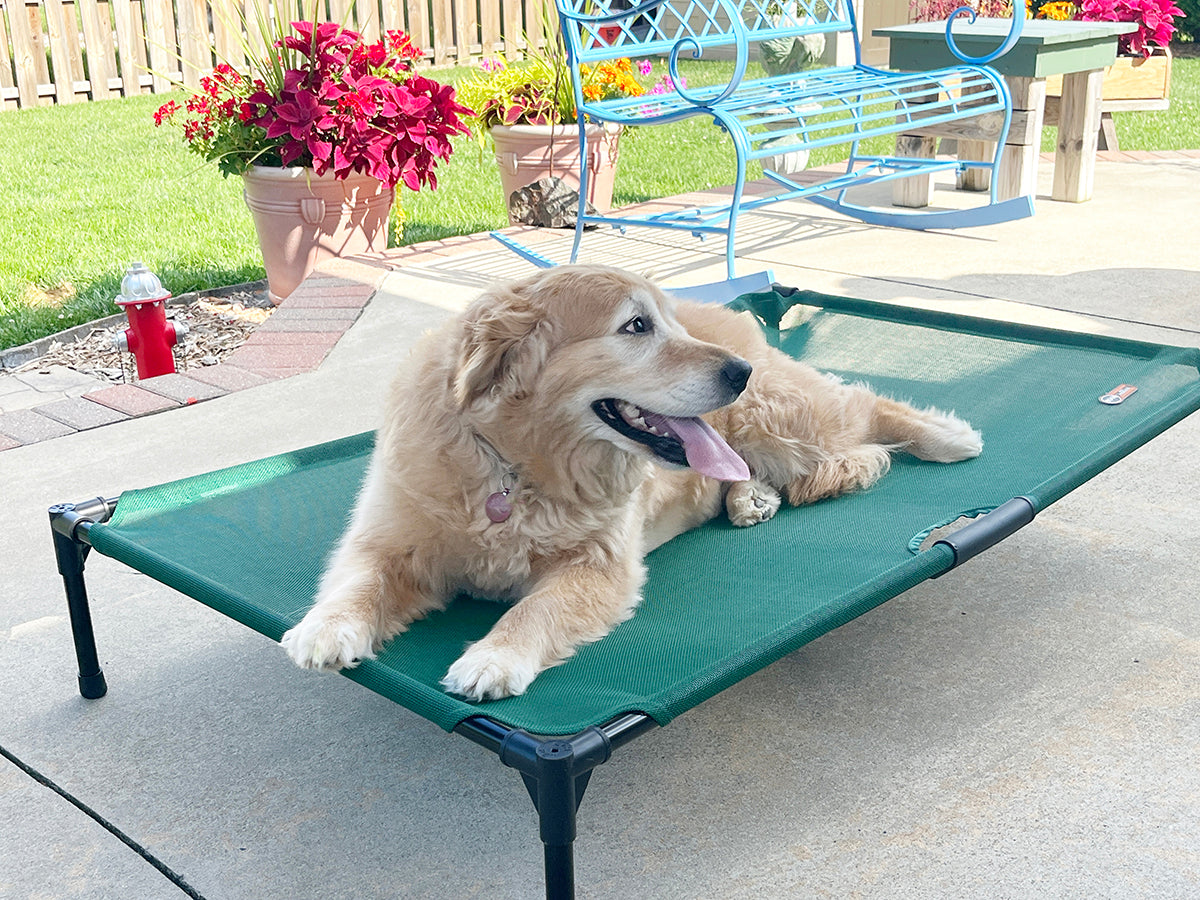
How to help a dog with arthritis at home
No one wants to see their beloved dog struggle with arthritis. Watching a once spry, active pup slow down from painful joints can be tough. The good news is that just a few small changes around your home can help your furry best friend feel better. This guide will walk you through helpful lifestyle changes you and your dog can start making right away.

1. Help Your Dog Lose Weight
Obesity puts a greater strain on your dog's joints and increases inflammation, making arthritis feel worse. If your pup is overweight, ask your veterinarian about safe ways to help him lose some pounds. Other options to help your dog may include physical therapy and massage, depending on your pup's unique situation.
2. Elevate Your Dog's Food and Water Bowls
Raising your dog's food and water bowls can make a bigger difference than you might think. By elevating your pup's dishes to shoulder level, your dog can maintain a neutral spine and neck while eating without having to bend her neck so much, which can ease arthritic strain. She'll be able to put more weight on her pelvic muscles instead of her front legs, which can also help.
3. Try Soft, Supportive Bedding
Supportive bedding can be soothing to a dog with arthritis. Pet owners have a range of options to choose from, including heated bedding, cooling beds for the summer and cushiony beds for added support.
Heated Dog Bed Ideas
The K&H Thermo-Snuggly Sleeper Heated Dog Bed makes an adorable addition to your home that your pup will love. Its low-wattage design heats to your dog's natural temperature and has side walls for extra security and comfort.
If your pup spends time outdoors, consider the K&H Deluxe Lectro-Soft Outdoor Heated Bed. It comes with a cushiony bolster for added comfort and is one of the only outdoor heated beds on the market with a bolster.
Both heated beds only heat to your dog's body temperature when in use, and they're both MET-listed for safety.
Cooling Dog Bed Options
The K&H Cool Bed III Cooling Dog Bed provides cooling comfort in the warmer months without electricity. It's a great choice for pets with arthritis or hip dysplasia. The water absorbs your dog's body heat and dissipates it into the air, helping provide a cooling sensation.
The K&H Coolin' Pet Cot is an elevated dog bed with a cooling center that absorbs your pet's body heat, just like the Cooling Dog Bed. It makes a great choice for outdoor use since it's elevated.
Elevated Dog Bed Options
In fact, most elevated pet cots — even if they don't have a cooling center — can help your dog feel cooler outside because they allow air to circulate beneath them. Elevated pet beds help alleviate pressure on your furry buddy's joints and offer a firm and even sleeping surface to help distribute your dog's body weight.
Other elevated pet cot options to consider include the K&H Original Bolster Pet Cot (which comes with a waterproof, fluffy bolster), the K&H Original Pet Cot Pad (which fits on the pet cot), and the K&H All Season All Weather Dog Cot.
All K&H Pet Cots feature removable, washable covers and slip-resistant rubber feet.
Orthopedic Dog Beds
The K&H Thermo-Ortho Bed combines warm bedding with orthopedic comfort for ultimate support. These beds, designed for indoor use, have dual orthopedic foam layers and warm to your dog's natural body temperature.
4. Install Pet Steps and Non-Skid Floor Coverings
Accessibility changes can help your dog get around your home easier with less discomfort. Start by installing some non-skid floor covers so he has less trouble gripping when he runs. Pet stairs can help him get into cars or onto your bed or sofa without jumping.
Start with the K&H Collapsible Pet Stair Steps. These Sherpa-lined steps have a machine-washable cover and can collapse for travel or storage. They come in three colors and two sizes.
Your pup will also like the K&H Collapsible Pet Stair Steps with Storage. The storage area beneath each step can hold toys, leashes and other pet supplies. They come in three- or four-step sizes and are easier to climb than a dog ramp.
Dogs with Arthritis Need Tender Loving Care
While arthritis is more commonly seen in senior dogs, even younger dogs can sometimes be affected. No matter the age, your pup will need a little extra TLC. First, visit your veterinarian to see if your dog needs a weight-loss program or other remedy. Next, help make your home as accommodating as possible with comfy beds and pet stairs. Of course, don't forget the number one prescription: lots of love every day! Your furry best friend will be grateful for all the attention and support.





